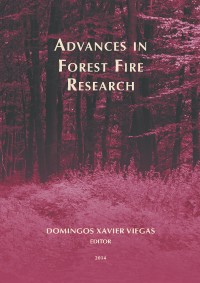Please use this identifier to cite or link to this item:
https://hdl.handle.net/10316.2/34117| Title: | Soil temperatures and fuel consumption in different species during three experimental fires as a fire severity measure | Authors: | Baeza, MJ Pérez, EL Santana, VM Ayache, F |
Keywords: | consumed biomass;fire ecology;fuel type;flammability;Mediterranean shrubland;severity degree | Issue Date: | 2014 | Publisher: | Imprensa da Universidade de Coimbra | Journal: | http://hdl.handle.net/10316.2/34013 | Abstract: | Forest fires are a recurrent disturbance in Mediterranean ecosystems, and the effect on the structure and dynamics of vegetation may depend largely on fire severity. Our knowledge of how fuel consumption in different species can be an indicator of fire severity is limited, and very few studies have covered this aspect. Our initial work hypothesis is based on the existence of different ecological severities according to each species’ structural characteristics. The work aims to determine degree of severity by assessing biomass of different species consumed during a fire. Three experimental fires in Ayora (eastern Iberian Peninsula) were conducted, and subplots dominated by Rosmarinus officinalis, Quercus coccifera, Erica multiflora and Juniperus oxycedrus were selected. The soil temperature during fire was measured using thermocouples in each subplot. Average fuel consumption per species was determined by measuring the minimum diameter of the branches burned in each subplot. Our results indicate fire severity variability between species. The fuel consumption values within the subplots differed significantly between species. The largest were found for E. multiflora and R. officinalis if compared to Q. coccifera and J. oxycedrus. The temperature residence time above 40°C was very important for all species, but the longest occurred in E. multiflora and J. oxycedrus. Soil temperature and its duration were related to fuel type. The results show that fuel accumulation and its spatial distribution in the plant architecture, associated with reproductive strategy, are one of the most important traits in determining fuel consumption and soil temperature and can, therefore, play a key role in fire severity terms. These results indicate the importance of considering fuel structure and flammability of species as potential drivers of new fire regimes. | URI: | https://hdl.handle.net/10316.2/34117 | ISBN: | 978-989-26-0884-6 (PDF) | DOI: | 10.14195/978-989-26-0884-6_46 | Rights: | open access |
| Appears in Collections: | Advances in forest fire research |
Files in This Item:
| File | Description | Size | Format | |
|---|---|---|---|---|
| 978-989-26-0884-6_46.pdf | 1.73 MB | Adobe PDF |  |
Items in DSpace are protected by copyright, with all rights reserved, unless otherwise indicated.
